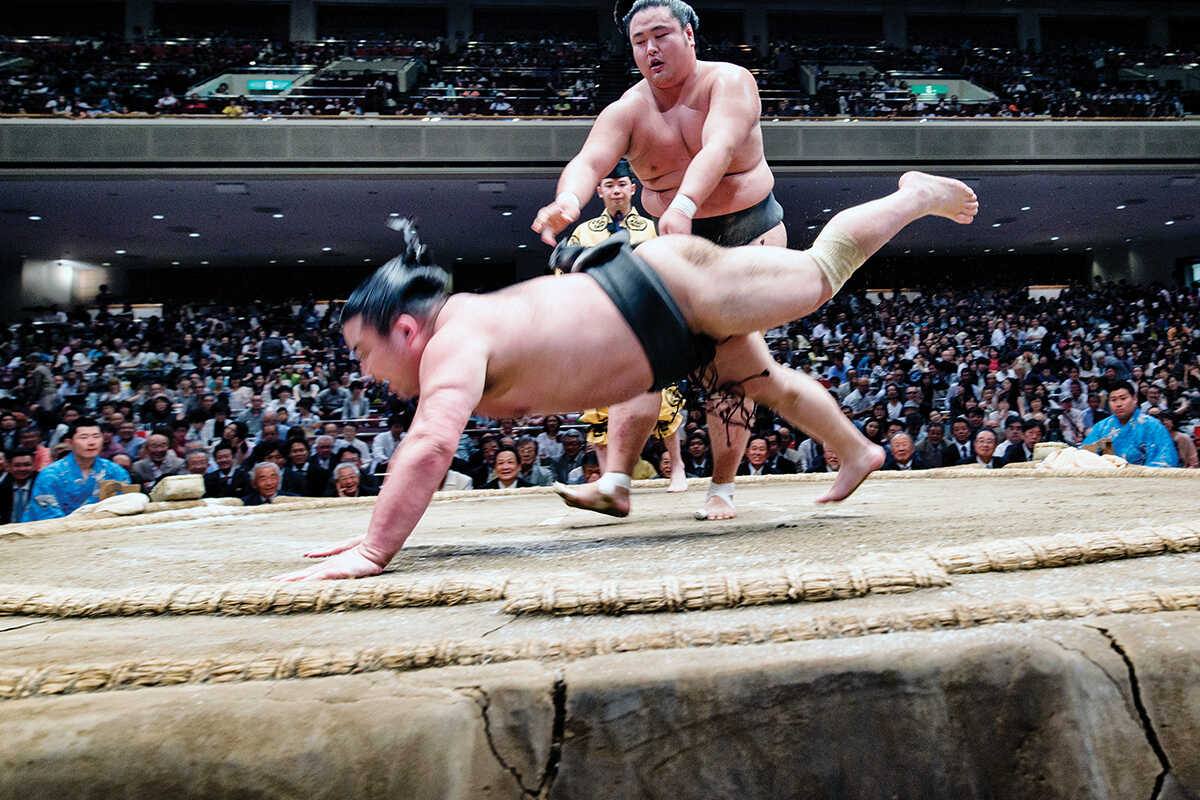
In this extract from Sumo by Lord K2, the hidden and immense world of sumo wrestling is revealed
Images by Lord K2
In the epicentre of the world’s largest city lies a grand stadium draped in ancient symbolism and brimming with anticipation as crowds pour in, settling onto their cushions as the dohyō (ring) is swept to perfection, as it has been for two millennia. Spectators chatter eagerly as warm sake is poured into small cups. The chatter grows to a clamour as, from the corner of the arena, giants emerge. Immense 150-kilogram men, wrapped in loincloths and sporting stern faces, waddle into the ring, their bodies rippling. They toss salt high into the air over the dohyō, ritually cleansing the stage, as applause rises across the auditorium.

The sport is one of the oldest in the world, stretching back nearly 1,000 years in its current format. Sumo can trace its origins back through deeply religious roots to the Shinto temples of the third century CE. Originally, fights were arranged as a spectacle for the entertainment of the gods. Sumo developed into a professional sport at the beginning of the Edo period, in the early 1600s. Wrestlers from across the land were invited to battle in front of the imperial courts as grand entertainment events for the nobility. Many wrestlers were samurai working part time for extra income. Fights were brutal and blood was frequently drawn. The sport, however, was a far cry from today’s well-scripted art form. Fighters usually found themselves in the ring to settle scores, often on behalf of their masters. It was as much a blood sport as a duel of wits and cunning, not dissimilar to Roman gladiator games.
The first professional sumo tournament didn’t take place until 1685 at the Tomioka Hachiman Shrine in Tokyo. The event became biannual and is considered to be the birth of today’s sumo. The rules of sumo are relatively simple. The winner of a bout is either the first wrestler to force his opponent out of the dohyō, or the first to force his opponent to touch the ground with any part of his body other than the bottom of his feet.

Despite its centuries spent metamorphosing, today, those in the upper echelons of the sport are deeply dogmatic about reformation, preferring to maintain sumo as a fascinating antiquity. However, at the turn of this millennium, its popularity and relevance in contemporary Japanese culture were beginning to wane. Crowds thinned to just the elderly and tourists, and fights ceased to be broadcast on national television. There were fears of its eventual demise. However, recent years have seen something of a resurgence, perhaps in part due to PR campaigns, perhaps as push-back against increasingly postmodern lifestyles. Tickets now regularly sell out during tournaments and stadiums are filling up again with spectators eager to hark back to a different time, a different Japan – one steeped in tradition, mysticism, respect and honour.







an official retirement ceremony held for a top wrestler in which his topknot is finally cut off. The next generation looks up in awe at one of the all-time favourites.

Click here to read our review of Sumo by Lord K2




